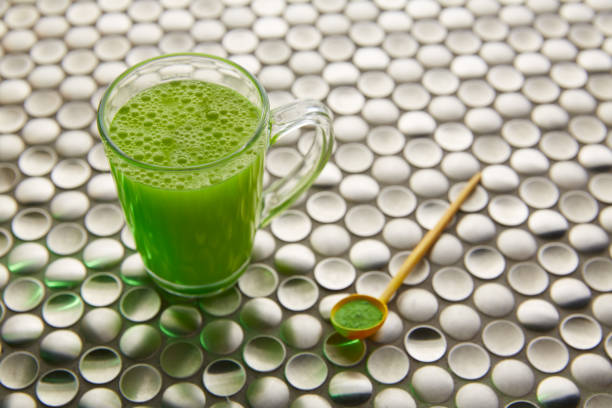Summer is a time of scorching sun, lazy afternoons, and the need to stay cool. Throughout history, people have devised various concoctions to beat the heat and quench their thirst during the sweltering months. These historical summer drinks are not only refreshing but also offer a glimpse into the culinary traditions and cultural heritage of different regions. From ancient civilizations to modern times, let’s explore some of these timeless beverages that have stood the test of time.
1. Ancient Greek Kykeon (7th Century BC)
In ancient Greece, particularly during festivals like the Eleusinian Mysteries, people drank a beverage called Kykeon. It was made by mixing water with barley, mint, and sometimes honey or cheese. Kykeon was not only a refreshing drink but also held ritualistic significance, being consumed during ceremonies honoring Demeter and Persephone.
2. Persian Sherbet (12th Century AD)
Sherbet originated in the Middle East and was introduced to Europe during the Crusades. Persian sherbet, known as sharbat, was made by diluting fruit juices or extracts with water and adding sugar and aromatic herbs or flowers like rose petals. It was served cold and became popular across the Islamic world and later in Europe.
3. Indian Nimbu Pani (19th Century AD)
Nimbu Pani, or lemonade, has been a favorite summer drink in India for centuries. It consists of freshly squeezed lemon juice mixed with water, sugar, salt, and sometimes spices like roasted cumin powder or mint leaves. Nimbu Pani is not only refreshing but also aids in hydration and digestion, making it a popular choice during hot Indian summers.
4. Victorian Era Shrub (17th Century AD)
Shrub, a vinegar-based fruit syrup, gained popularity during the Victorian era. It was made by preserving fruits like berries or peaches with vinegar and sugar, creating a tangy-sweet syrup. Shrub was often mixed with water or soda water to make a refreshing beverage, and its tartness helped combat the heat of summer.
5. Mexican Agua Fresca (19th Century AD)
Agua fresca, Spanish for “fresh water,” is a traditional Mexican drink made by blending fruits like watermelon, cantaloupe, or pineapple with water and sugar. Sometimes, herbs like mint or spices like cinnamon are added for extra flavor. Agua fresca is widely enjoyed in Mexico and has become popular in other parts of the world for its refreshing taste.
6. American Mint Julep (18th Century AD)
The Mint Julep originated in the Southern United States and gained popularity in the 18th century. It is made by muddling mint leaves with sugar and bourbon whiskey, then adding crushed ice. Mint Julep is a quintessential summer drink, especially favored during the Kentucky Derby, and is known for its cooling effect and refreshing taste.
7. Japanese Mizu Shingen Mochi (21st Century AD)
A modern take on a traditional Japanese dessert, Mizu Shingen Mochi, also known as “Raindrop Cake,” is a refreshing summer treat. It is made from water, agar, and sugar, giving it a jelly-like consistency. Mizu Shingen Mochi is served chilled with roasted soybean flour and syrup, providing a unique and cooling experience.
8. Brazilian Caipirinha (19th Century AD)
Caipirinha is Brazil’s national cocktail and is made with cachaca (a spirit made from sugarcane), lime, sugar, and ice. It originated in the 19th century and has since become a beloved summer drink both in Brazil and internationally. Caipirinha’s tangy-sweet flavor and icy coldness make it a perfect choice for hot days.
9. Moroccan Mint Tea (18th Century AD)
Moroccan Mint Tea, also known as “Maghrebi Mint Tea,” is a traditional North African beverage made with green tea, fresh mint leaves, sugar, and boiling water. It is often poured from a height to create froth and is served hot or over ice. Moroccan Mint Tea is not only refreshing but also a symbol of hospitality in Moroccan culture.
10. Italian Granita (17th Century AD)
Granita is a semi-frozen dessert originating from Sicily, Italy. It is made by freezing a mixture of water, sugar, and flavorings like fruit juice or coffee, then scraping it with a fork to create a crystalline texture. Granita is served in various flavors and is a popular summer refreshment in Italy, offering a cool and satisfying treat.
In conclusion, historical summer drinks offer not only relief from the heat but also a taste of cultural heritage and culinary traditions from around the world. From ancient rituals to modern innovations, these beverages have evolved over centuries to provide refreshment and enjoyment during the hottest months of the year. Whether it’s the tangy sweetness of Persian sherbet or the icy coolness of a Mint Julep, there’s a historical summer drink to suit every palate and preference. So, next time you’re looking to beat the heat, why not raise a glass to the past and savor the flavors of history?



